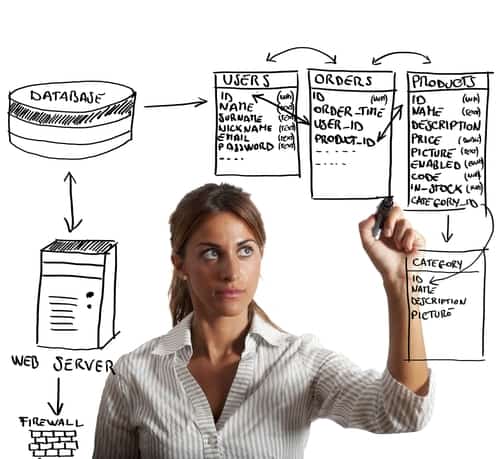ERP solutions for large companies

Success should not breed complacency. When businesses begin to grow, they may take it as a sign that they are doing everything right and, therefore, will not search for new opportunities.
Entering a larger market means a business has to deal with more challenges. The old financial systems and software tools probably won’t be able to handle global competitors and expanded distribution. Larger companies should look to modern ERP solutions to handle growth and promote future success.
Holding onto old systems
Basic systems like QuickBooks may be satisfactory when businesses are dealing with a single location and a small number of employees, but they will not be able to handle data pouring in from multiple sources.
NetSuite published a list of the most common signs that a company needs to ditch its previous systems and adopt a modern solution. The first indication that a company has outgrown previous tools is the use of multiple software programs that cannot easily share data. Different departments use different tools and independent locations may not be plugged into the overall infrastructure. A small business that opens new stores, warehouses or manufacturing plants needs to integrate its information in a way that is not handicapped by geography.
Next, older systems may not have the complexity required to handle increased revenue or customer demands. Simple financial programs are unable to automate difficult monetary transactions and older systems may have data caps. Accounting, sales and IT in growing businesses all have increased performance requirements start-up software tools can’t handle.
ERP for growing businesses
The majority of large industries are using ERP strategies to meet their daily demands. As a company grows, it needs to adopt complex data tools and ensure the entire company is working off a single infrastructure.
A mix of software programs creates a headache for supervisors and managers. Employees who compare data from different departments need a tool that gets information to work together. Microsoft Dynamics NAV creates a system to be used by every section of a business. Warehouse updates inventory counts so sales can see available products. Customer service has access to shipping schedules and can update clients. Managers are given complete visibility of the entire enterprise.
This companywide data sharing generates consistent quality. No matter how many manufacturing plants or distribution centers are created, each location is working with the same set of guidelines for procedures. Demand Media stated business heads may supervise product creation and handling and compare it to established quality standards or competitors. It allows a company to provide its customers with the top-notch products it has always offered.
More customers lead to more work. ERP software should automate tasks. Inc. suggested software tools could be used to perform specific supply chain duties. A warning system can be put in place when inventory gets low, orders can automatically be sent to established vendors and projections can be created for future seasonal demands. A growing business should not be wasting capital and resources on processes easily performed by the software system.
New technology
Even if a company is not changing, the industry it does business in probably is. New technology means customers and competitors are introducing new devices into the marketplace.
Forbes discussed how most manufacturers have to implement ERP solutions to accommodate changes customers ask for after the order has been placed. A company needs cloud-deployed software to accommodate rapid and frequent service upgrades. Clients use mobile devices to send questions and requests; a business should use similar tools to ensure they are receiving communications instantly, before products are created that don’t meet the specifications.
Microsoft Dynamics NAV software has mobile modules. The system may be utilized on smartphone or tablets. It puts ERP technology into the hands of the workers on the manufacturing floor, employees in the warehouses and managers in multiple locations.
Implementation
There are different ways a company may go about implementing ERP updates into an existing system. Some businesses work with a software partner to select an initial program. Once they discover a software provider they can form a relationship with, they will explore the possibility of purchasing add-ons and updates as their business grows.
Larger businesses may wish to proceed with a multi-tier implementation process. Business 2 Community described a multi-tier ERP strategy as companies purposefully using different systems in different areas so as not to limit individual creativity or flexibility. While an ERP system is generally adaptable, some companies find it better to adopt unique practices for each department and then find an overall infrastructure that works with the multiple systems.
If a growing company is looking to tier its ERP implementation, it should be very clear on the needs and performance of each individual section. Managers should approach a software expert with a plan for each department and inquire what strategy would best accommodate information unity while maintaining regional freedom.


